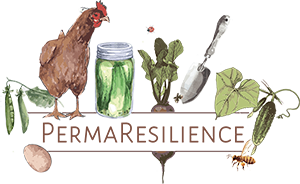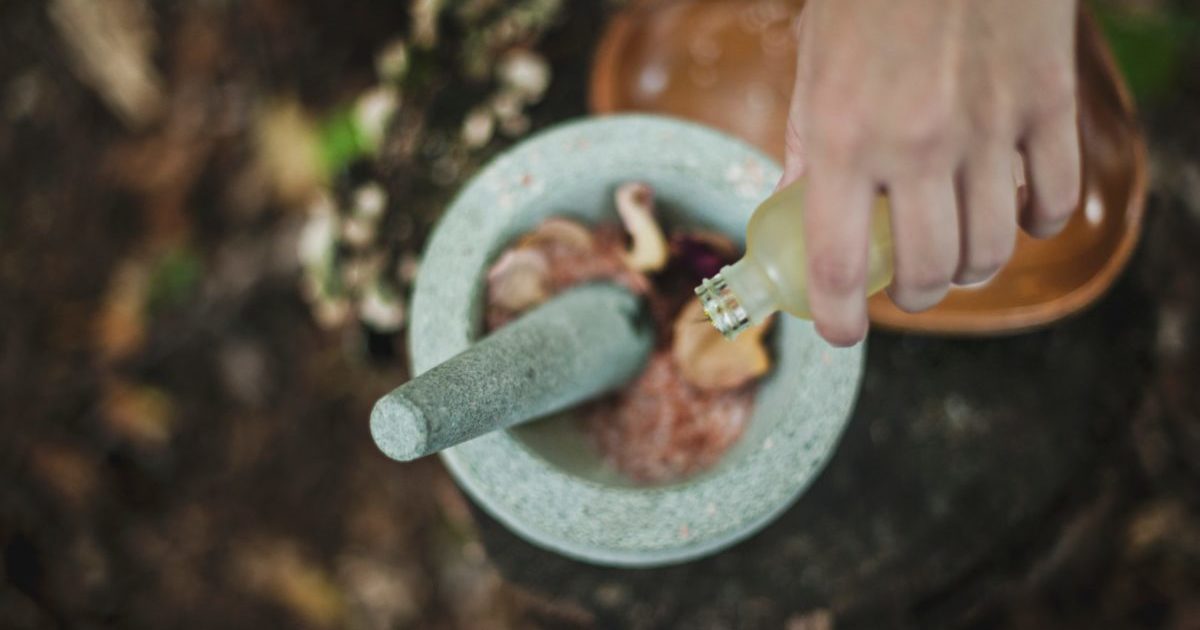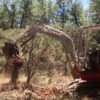Are you prepared for the next lockdown, blackout, food shortage, or recession? These are the 6 pillars of preparedness that you can begin today to create more freedom and security for you and your family no matter what is going on in the world!
Video Transcript:
We’re talking about the six pillars of preparedness, how permaculture relates to these pillars, and how you can create a holistic homestead for a secure and useful life no matter what’s going on in the world.
After we discuss this, we’ll move on to the Holistic Homestead Academy permaculture design course and answer student questions relating to preparedness and permaculture. But first, let’s dive into these six pillars of preparedness.
Now, I think it’s easy to see for most people that things are a little unstable in the world right now. The past two years have shown us that anything is possible and that we should expect crazy things to happen.
I’m not a Doomer that thinks the world’s going to fall apart or that there’s going to be an apocalypse or anything like that. But I really do believe that you should prepare for the worst and hope for the best. If you have this kind of mentality, a couple of…
We’re talking about the six pillars of preparedness, how permaculture relates to these prepared pillars of preparedness, and how you can create a holistic Homestead for a secure and useful life no matter what’s going on in the world.
Now, after we’re talking about this, we’re going to move on to the Holistic Homestead Academy permaculture design course student questions and answers relating to preparedness and permaculture. But first, I want to dive into these six pillars of preparedness.
Now, I think that you know it’s easy to see for most people that things are a little unstable in the world right now. The past two years have shown us definitely that anything is possible and that we should expect crazy things to happen.
Now, I’m not a Doomer that sits there and thinks that the world’s gonna fall apart and that there’s going to be an apocalypse or anything else like that, but I really do believe that you should prepare for the worst and hope for the best.
Because if you do this and if you have this kind of mentality, when things happen, not only are you just generally positive and optimistic, but you can be positive and optimistic because you know that your needs are well taken care of as possible no matter what’s going on in the world. And if that’s the case, then you’re able to help friends, family, and community through tough times.
Now, we’ve seen a lot of crazy things, right? With the lockdowns and the “pandemic” and things like that, that was totally unexpected. We’ve seen supply chain issues where we’ve gone to the store, whether it’s Home Depot for supplies or the grocery store for food, and we’ve seen shelves being empty.
We have economic issues like inflation and turmoil in the economy, starting to create stress and fatigue on businesses and products, which is going to further exacerbate supply chain issues potentially. We don’t necessarily know when the end of this is coming. We have a recession period, but we have a complicated recession where they can’t just necessarily print more money because they’re going to cause more.
Inflation has created unique times, which we have all witnessed in the past couple of years. For many people, this situation causes unease, stress, and worry. It may be difficult to sleep at night with these things going on. However, there is a solution. The solution to all of this, the thing that can provide a peaceful night’s sleep, is to create a prepared life in a holistic homestead.
The idea may sound overwhelming and daunting, and some people may not know where to start. But that’s what we’re going to discuss today. We will talk about the six pillars of preparedness, how to put them into practice, and how to relate them to your permaculture homestead.
There is a problem with preparedness. While it has its benefits and can be related to permaculture in many ways, it lacks long-term self-sufficiency. In permaculture, we seek to design systems that mimic nature and create self-reliance through sustainability.
Animals, such as squirrels and chipmunks, store up food for the winter months, and bears eat a lot of food before hibernating to build up reserves. Preparedness is similar in this way, but it focuses on getting ready in six key areas. Unfortunately, the author does not elaborate on what these areas are.
Preparedness involves six key areas for dealing with intermittent issues and interruptions. However, it’s important to note that preparedness is not about relying solely on stored pantry items and supplies for long-term survival. Rather, it’s one of two pieces in the puzzle of self-sufficiency.
The other piece is production, which is where permaculture comes in. Permaculture focuses on creating productive and sustainable systems that mimic nature, such as effortless abundant gardens and holistic animal systems. This is the transition from a consumptive life to a productive life, which is the essence of permaculture.
Think about a typical suburban backyard with a lawn, playground, and ornamental trees that require irrigation and produce nothing. This is not a sustainable or self-sufficient landscape. Permaculture involves transforming our landscapes and homes from consumptive to productive, and this includes our front and backyard landscapes.
Producing soil can produce grain and all kinds of things. So what I’m saying here is that when I’m talking about preparedness and permaculture, there are two aspects of it. There is the stocking up and prepping side of it that allows you to get through difficult times, which many people will experience, whether it’s some of the things we’ve talked about or even just normal natural disasters.
Recently, we had Hurricane Ian come into Florida and take out a lot of certain communities in that area, ice storms in Texas that happened last year and the year before, mega-fires in California, and flooding in the Midwest. It’s not some conspiracy theory thing to be prepared for, it’s a smart thing. You know it’s if you’re concerned about your family, it’s what you do to take care of your family, right?
Like could you imagine being unprepared in the middle of a natural disaster, unprepared in the middle of another pandemic or pandemic, whichever it ends up being, and looking at your family and not being able to take care of them, right? That’s what we’re trying to avoid here, and we do this with the two stages of preparing and using permaculture systems to become producers.
Now there’s a key here that I want to talk about. This isn’t an all-or-nothing kind of thing, and this is where I think people get a little overwhelmed. They’re like, “Oh my God, I have to produce food for the next year or two and store up all this stuff.” No, no, it’s not how it works.
This isn’t an all-or-nothing kind of thing. Okay, when it comes to preparedness and permaculture, it’s more about iterations toward self-sustainability and preparedness. So the way I look at it like this is, that I’ll introduce the six pillars here in just a second, before getting into the student questions.
Now across the six pillars that I’m going to show you, we want to iteratively improve these six areas to create preparedness and create ease and create relief in our life, and these iterations are based on time.
So, the way I kind of look at it is, it’s not set in stone and turned to these time spans, but I look at three days, then three weeks, then three months, then a year. In other words, let’s take, for example, the first pillar, which is food.
So, you want to be prepared for three days. In other words, let’s say something happens, and you can’t leave your home for three days. Are you prepared for three days?
And once you’ve gotten yourself prepared in the food pillar for three days, then you can move on to preparing for three weeks. And then, once you’ve prepared for three weeks, can you prepare for three months?
Let’s say things get really squirrely, and in my head, about three months is kind of like the limit to some of these areas like preparing because I’ll explain, I’ll talk about that actually in a little bit more, but so three months of preparation.
Next, I look at some of these pillars, one year of preparation, and some of these areas. It’s hard to get a year’s worth of preparation, and we’ll maybe talk a little bit about that here in just a minute. But, for example, in the food pillar, you can get a year’s worth of food prepared, and I would recommend it.
Now, beyond that, you know, and this is where prepping kind of fails, like you, can’t prepare forever, but you can create a productive lifestyle with permaculture that does allow you to be productive forever, especially when you’re leaning into a community.
And again, it’s not all or nothing, and it’s not about doing everything yourself. And this is, you know, we have a productive landscape and home, and for ourselves that produces some of the essential things we need.
But we also want to, you know, encourage and be an inspiration to our communities to do the same. Part of the reason why we picked where we do live is that there is a productive community. In other words, we live rurally in an agricultural-ish community.
I say “ish” because, you know, we’re not like Midwest agriculture where just everything is farmland. We’re on the High Desert Edge of mountains where there is agriculture, but it’s limited to some extent due to the climate.
There are people growing apples and hay and things like that here, so we have a partially agricultural community. People grazing pigs, cattle, and things like that. In other words, the community, in and of itself, is somewhat self-reliant, and self-sustainable, and we can rely on that, but only if we have something to offer in exchange, right?
And so that’s why we’re productive on some things on our property, whereas our neighbor or our neighboring farms are productive on other things on their properties.
So that’s the key. We don’t want to look at this in terms of, “Oh, I need to be prepared for a year.” Just start on iterations. Get yourself prepared in the six pillars for three days, for three weeks, for three months, and in a year.
Now let’s talk about these six pillars here real quick. I’m not gonna go into tons of detail in terms of all the nuances of these pillars because I’m more talking about a broad overview of preparedness and how to look at it, and then some of these pillars should just make sense in terms of like, “Oh, what should logically go in.”
But the first pillar here is food. So we’re talking about gardening, raising animals, hunting, pantry, and preps. And again, you can lean on your community, and you don’t have to do it all, but you want to iteratively stock up on your food, from three days all the way up until about a year.
The second pillar that you want to look at is medicine. In other words, can you take care of yourself if you need to? And this is like a medicine garden. This includes a pantry full of herbs and essential oils. This includes medical preps like basic first aid supplies, tourniquets, antibiotics, pain relief, and any of these.
Kind of things, but medicine is also included. Basic first aid is necessary for situations where there’s a lot going on. You could have your local First Responders completely tied up and have a medical emergency yourself. So, are you capable of taking care of yourself?
Like I’ve gone and done, you know, basic first aid and trauma lesson classes to ensure that in an emergency situation, I could keep somebody sustained until First Responders got there. So, we have food for the first pillar, medicine for the second pillar, and preparedness.
The third pillar, prepare for preparedness, is water. This is just basic water storage, having enough on hand to drink if the water gets shut down for a variety of reasons. It also includes purification, being able to purify some water if necessary, and then it extends into things like water collection.
And this is more long-term, being that if Grid’s down for a while, and you need to drink water and you’ve gone through your water storage, you know that you can actually collect more water.
The fourth pillar is energy, so here I’m talking about having fuels and basic backup power. This includes things like a simple gas or propane or diesel power generator. It could be a solar-powered generator-inverter combo just to kind of keep your phone and laptop up and running here, and then it extends into things like off-grid systems.
And you can see with these pillars, like the last two with water, I kind of started with basic preps that moved into more like permaculture, homesteading, and off-grid systems. Energy is the same here too.
It’s easy to get some of the backup fuels in a generator and an inverter, like things like that. Those are just things you can buy and have on hand in case of an emergency, and then it transitions into longer-term things like off-grid systems, right? That includes a solar system on your home so that way you’re not even relying on the grid.
Fifth is shelter. Now, this is, to some extent, obvious, but there are things I want to point out here, and that’s just physical structure to keep you and your family safe. And one thing I want to point out here is most people have a home, or you know, that they live in, but one thing I want people to think about is the value of mobile shelter. For example, a simple tent that you can set up quickly and easily in case you need to leave your home in an emergency situation.
Finally, the sixth pillar is security, and this includes things like personal defense, home defense, and community defense, and this is something that, you know, a lot of people don’t like to think about, but it’s really important.
And, you know, it could be something as simple as having a baseball bat or a shotgun, or it could be something more complex like having a security system on your home or being part of a neighborhood watch program or having a group of like-minded individuals that you can rely on in case of an emergency.
RVs can be advantageous in some instances, such as in the case of a wildfire or a hurricane where you need to evacuate. It’s advantageous to have a mobile shelter that you can stock full of stuff and take with you so that no matter what, you and your family are okay. For example, maybe a bunch of people needs to evacuate an area and start flooding outwards, and then all the hotels, motels, and Airbnbs start getting booked out for miles and miles.
But yet you have your shelter because you have a mobile shelter. With the shelters, it does imply being self-sufficient within the shelter, and at a basic level, we’re talking about shelters and sanitation. Having something like a composting toilet doesn’t necessarily mean you need a permanent composting toilet mounted in the structure that you regularly use.
It could be as simple as an outdoor composting toilet, a five-gallon bucket with a lid, and sawdust to ensure that you can maintain sanitation in a grid-down natural disaster kind of situation. That’s something simple that anybody can do to take care of themselves if needed. Now, that’s again on the shorter-term, super easy-to-implement kind of thing. The shelter does transition into more off-grid systems like continuing water recycling.
Gray Water Systems in a home, alright. And last but not least, but probably most importantly, in the six pillars of preparedness is income. And I look at this in two segments. I look at it in terms of savings, and I look at it in terms of income generation.
So the idea being, you know, how much money do you have saved up in case you can’t work? And again, I look at this in an iterative way: three days, three weeks, three months, and a year’s worth of savings. Right? And the same thing to income generation. Do you have the skills, abilities, and experience necessary to generate income if necessary?
Like if you lost your job, you know, say there was an economic collapse, which we’re teetering on, with you know, some of the things… I don’t want to get into this in too much detail, but if you look at what’s going on in the UK and places like that right now, things are teetering.
And that could cause a snowball effect where all of a sudden, tons of big businesses go out of business, and tons of people are unemployed, which then further exacerbates a breakdown of the supply systems and impacts other things.
And like you can’t take care of, you know, if you’re not taken care of, you can’t take care of other people, you can’t take care of your family, you can’t be a positive contribution to society. So I like to look at income in these pillars because that’s fun, that’s one of the fundamental things.
Like you need money to get by. I’m not a person who thinks that money isn’t a component of, you know, of a homestead life. It absolutely, totally is. It’s the fundamental component. If you’ve heard me talking, you know, I really do believe that that’s a necessary component to having a functioning, functioning self-sufficient life and functioning self-sufficient homestead.
So that’s kind of an overview of my six pillars of preparedness. All that said, I think I’ve talked enough here, and I want to get into the student questions that we have for this topic here this month.
Some of my, oh speaking of preparedness, my coffee is off-grid coffee. I have a Flair Espresso, you can look them up online. Flair, f-l-a-i-r, Espresso. It’s a hand-powered espresso press to make some of the best espressos that there are, and perfect for grid-down situations because it doesn’t require power. And then you can have incredible coffee at home. So, I just want to plug that for them right there. Maybe I’ll even add a link below.








